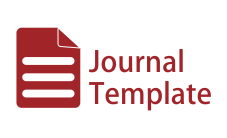Measuring the efficiency of sharia business units of Indonesian private banks: a data envelopment analysis approach
DOI:
https://doi.org/10.21580/jiemb.2022.4.2.12913Keywords:
, data envelopment analysis, efficiency, Indonesian private bank, sharia business unit.Abstract
With the development of sharia banks, one of the effects is the existence of competition among sharia banks. This study analyses the efficiency of sharia business units of private banks in Indonesia. Understanding efficiency is essential because if banks perform consistently with total efficiency, the fewer inputs they use, the larger their output. Total earning assets measure the output, while the inputs used are total deposit and total operating costs. A data envelopment analysis with input-oriented and variable returns-to-scale is used to accomplish the objective. The result shows that three of the seven sharia business units under investigation are considered the most efficient. This indicates that the sharia business unit does not have to have the highest output value to be the most efficient one. It also must have low values of inputs.
Keywords: data envelopment analysis; efficiency; Indonesian private bank; sharia business unit.
Downloads
References
Arafat, W. (2006). Manajemen Perbankan Indonesia: Teori dan Implementasi. Jakarta: Pustaka LP3ES.
Ayub, M. (2007). Understanding Islamic Finance. New York: John Wiley & Sons.
Cahyono, E. F., & Rani, L. N. (2017). Performa Efisiensi Teknis Unit Usaha Syariah Bank Pembangunan Daerah di Pulau Sumatera. HUMAN FALAH: Jurnal Ekonomi Dan Bisnis Islam, 4(1), 19–33. https://doi.org/10.30829/hf.v4i1.589
Cooper, W. W., Seiford, L. M., & Tone, K. (2006). Introduction to Data Envelopment Analysis and Its Uses: With DEA-Solver Software and References. New York: Springer.
Dhumale, R., & Sapcanin, A. (1999). An application of Islamic banking principles to microfinance. New York: Technical note, A study by the Regional Bureau for Arab States, UNDP, in cooperation with the Middle East and North Africa Region, World Bank.
Ferrera, J. M. C., Cebada, E. C., Chaparro, F. P., & González, D. S. (2011). Exploring Educational Efficiency Divergences Across Spanish Regions in Pisa 2006. Revista de Economía Aplicada, 19(57), 117–145. Retrieved from https://www.redalyc.org/articulo.oa?id=96922243005
Ferrera, J. M. C., Cebada, E. C., & Gonzalez, D. S. (2010). Factors Affecting Educational Attainment: Evidence From Spanish Pisa 2006 Results. Regional and Sectoral Economic Studies, 10(3), 56–76.
Fianto, B. A., Gan, C., Hu, B., & Roudaki, J. (2018). Equity financing and debt-based financing: Evidence from Islamic microfinance institutions in Indonesia. Pacific Basin Finance Journal. https://doi.org/10.1016/j.pacfin.2017.09.010
Masrizal, Sukmana, R., Fianto, B. A., & Gultom, R. Z. (2022). Does economic freedom fosters Islamic rural banks efficiency? Evidence from Indonesia. International Journal of Productivity and Performance Management. https://doi.org/10.1108/IJPPM-11-2021-0660
Obaidullah, M. (2008). Introduction to Islamic Microfinance. Jeddah: IBF Net Limited.
Salami, O. L., & Adeyemi, A. A. (2015). Malaysian Islamic Banks Efficiency: An Intra Bank Comparative Analysis of islamic Windows and Full-Fledged Subsidiares. International Journal of Business and Society, 16(1), 19–38. https://doi.org/10.33736/ijbs.551.2015
Syairozi, M. I., Zulyanti, N. R., & Handayati, R. (2017). Analisis Efisiensi Perbankan Syariah (Unit Usaha Syariah) Indonesia Periode 2013-2015: Pendekatan DEA (Data Envelopment Analysis). Economic: Jurnal Ekonomi Dan Hukum Islam, 8(2), 93–105. Retrieved from http://ejournal.kopertais4.or.id/tapalkuda/index.php/economic/article/view/2985
Downloads
Published
Issue
Section
License
Authors who publish with this journal agree to the following terms:
Authors retain copyright and grant the journal right of first publication with the work simultaneously licensed under a Creative Commons Attribution-ShareAlike 4.0 International License that allows others to share the work with an acknowledgement of the work's authorship and initial publication in this journal.
Authors are able to enter into separate, additional contractual arrangements for the non-exclusive distribution of the journal's published version of the work (e.g., post it to an institutional repository or publish it in a book), with an acknowledgement of its initial publication in this journal.
Authors are permitted and encouraged to post their work online (e.g., in institutional repositories or on their website) prior to and during the submission process, as it can lead to productive exchanges, as well as earlier and greater citation of published work (See The Effect of Open Access).


